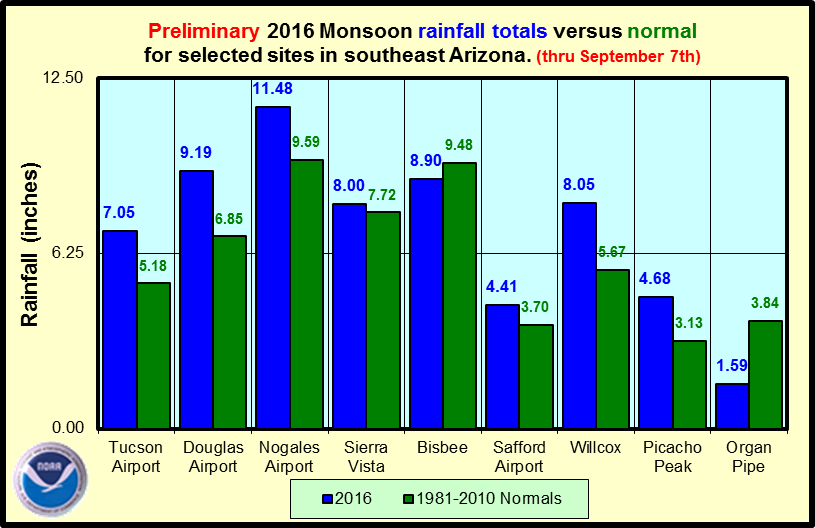Hurricane Newton was more blessing than catastrophe for much of Southern Arizona — no toppled trees or power lines, no flooded streets, just a slow rain that seeped into the soil instead of running off to washes and rivers.
It put most of the southern part of the state in the win category for the 2016 monsoon, and ahead of normal totals for the year to date. Tucson added 1.27 inches to boost its monsoon total to 7.05 inches. Normal for the entire period June 15 to September 30 is 6.08 inches.
University of Arizona climatologist Mike Crimmins said some rain gauges recorded rain during each hour of a 20-hour period when remnants of the hurricane hovered overhead Wednesday.
“The rainfall rates were slow enough that moisture was able to infiltrate into the soils without runoff being a major issue,” said Glenn Lader of the National Weather Service in Tucson.
Some areas, especially at higher altitudes, wrung out more rain from the prodigious cloud cover, Lader said. Gauges in the Rincon, Santa Catalina, Huachuca and Pinaleño mountains collected more than 6 inches.
Despite all that mountain rain, many of the major watercourses did not fill. It helped that the storm was preceded by a couple of dry weeks, said Lader.
Meteorologist Bob Maddox, writing on his Mad Weather blog, said he was surprised, “given the heavy mountain rains, that there had been no flow in the Rillito downstream from the Dodge gauge …”
In an email, he said there was “only one plausible answer — the steady, low, rain rates were to large degree soaked up by the soil.”
In town, the usual streets flooded. Things were a mess near the Weather Service offices on North Euclid Avenue and East Sixth Street, said Lader.
Maddox wrote that the runoff in his north-central neighborhood — “down Dodge, Country Club, and Tucson was pretty ugly, but absolutely nothing like the events of 26 June and 9 August when these streets were raging torrents and hardly usable.”
That’s the difference between a steady, winter-like rain and the vicious bursts that come with monsoon thunderstorms, said Crimmins.
Newton made landfall in Mexico as a tropical storm, but weakened considerably by the time it crossed into Arizona near Nogales, which received 2.5 inches of rain.
If the remnants of Newton had arrived in the heated atmosphere of the afternoon, they might have turned into thunderstorms, said Lader.
On Wednesday, however, the sky was blanketed at dawn and stayed that way.
“The core of the heaviest rain was south and east of Tucson — heaviest in Santa Cruz County, western Cochise County and southern Greenlee County,” Lader said.
The community of Hereford in Cochise County was the site of the only swift-water rescue reported to the Weather Service, he said.
The Sierra Vista Herald reported that a couple and their dog were rescued by firefighters after their car was swept down an arroyo near South Burro Drive and East Ramsey Road.
No deaths, no major damage, no significant flooding — Hurricane Newton caused less havoc than a single thunderstorm.
“You couldn’t ask for it to come in a better package than that,” said Crimmins.





